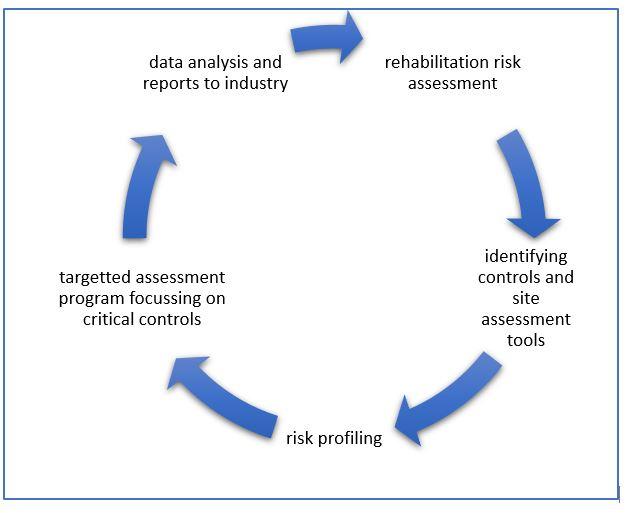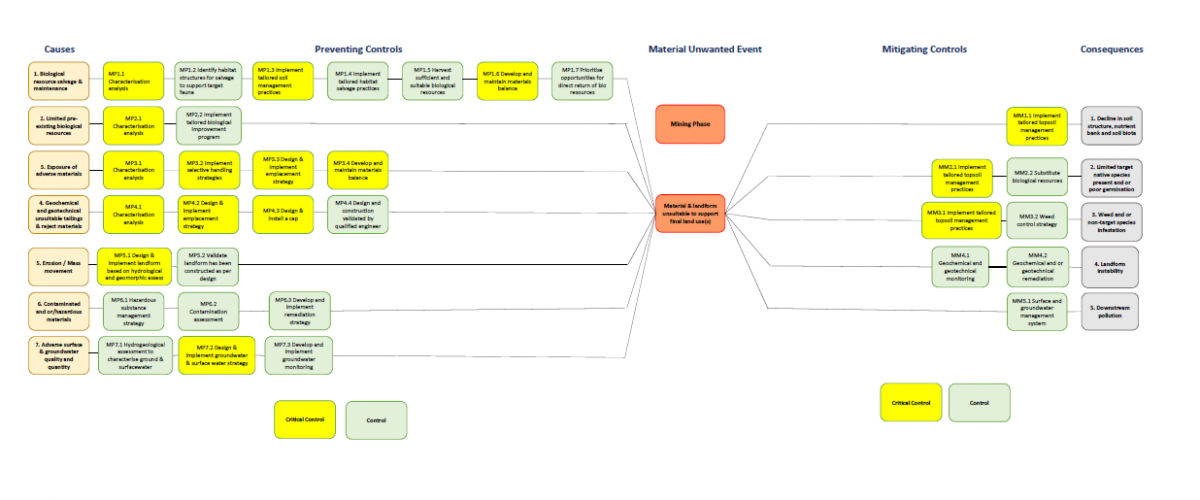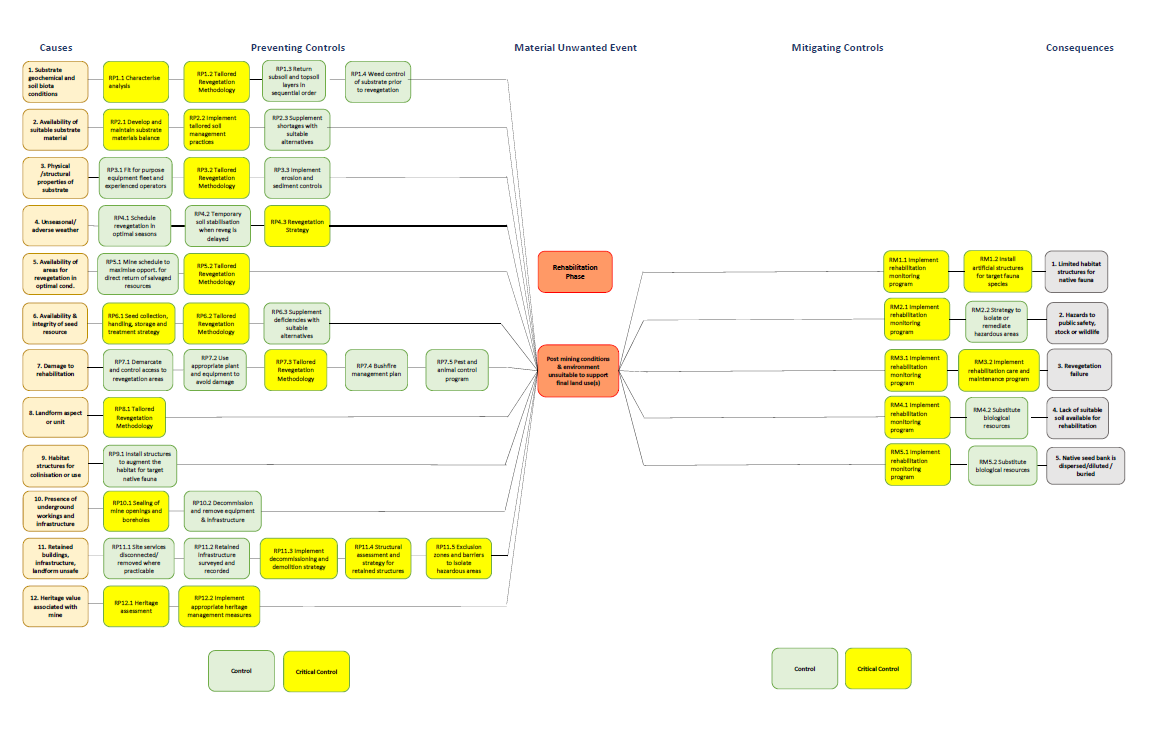Regulating risks to rehabilitation
The Compliance and enforcement approach 2017 (PDF, 537.75 KB) sets out the principles that underpin the NSW Resources Regulator’s compliance and enforcement processes and regulatory actions. The Regulator manages the risks to rehabilitation as part of a risk-based and outcomes-focused approach to compliance and enforcement.
The Regulator is committed to a responsive compliance model to manage risks to rehabilitation where:
- compliance and enforcement actions are driven by a risk-based and outcomes-focused approach
- our activities are focused on areas of greatest risk and our strategic priorities
- we use our limited resources effectively by adopting an intelligence-led, risk-based model, and
- we apply a flexible and robust intervention framework to target specific risks.
The Regulator’s risk-based intervention comprises the framework depicted. It includes the ongoing identification and verification of risk profiling, incorporating risk control measure verification and targeted assessments focussing on critical risks and the critical controls required to mitigate these risks.

Rehabilitation risk assessment
A risk assessment focusing on rehabilitation and mine closure has been conducted by the Regulator in consultation with industry stakeholders and other government agencies. The bowtie risk assessment method was used to clearly display the links between the potential causes, the preventative and mitigative controls and the consequences of the material unwanted event - being where the post-mining conditions and environment are unsuitable to support the final land use(s).
The bowtie assessment addressed the rehabilitation risks during the operational mining phase and the rehabilitation phase.
The mining phase included:
- land clearing
- active mining operations
- decommissioning following completion of mining
- construction of the final landform.
The key unwanted event during the mining phase is that the material and landform is unsuitable to support the final land use(s). View the bowtie risk assessment addressing the mining phase (PDF, 457.48 KB).

The rehabilitation phase included:
- growth medium development
- ecosystem and land use establishment
- ecosystem and land use development to achieve a sustainable, post-mining land use
The key unwanted event during the rehabilitation phase is that the post-mining conditions and environment are unsuitable to support the final land use(s). View the bowtie risk assessment addressing the rehabilitation phase (PDF, 476.71 KB).

The rehabilitation risk assessment is used by the Regulator to:
- provide guidance to industry on the range of risks associated with the establishment of sustainable mine rehabilitation, which can be considered in site-specific risk assessments when developing and implementing rehabilitation management plans
- inform the identification of preventative and mitigating controls, including controls that are critical to ensuring sustainable rehabilitation
- facilitate the development of site assessment tools and targeted assessment programs (TAPs) focussing on the critical controls
- inform the operational rehabilitation reforms
- provide the basis for the development and implementation of a range of rehabilitation guidelines.
Critical controls
The bowtie rehabilitation risk assessments have been used by the Regulator to identify critical risk controls and assess their effectiveness. A critical control is defined as:'
“a control that is crucial to preventing the event or mitigating the consequences of the event. The absence or failure of a critical control would significantly increase the risk despite the existence of the other controls. In addition, a control that prevents more than one unwanted event or mitigates more than one consequence is normally classified as critical.”
The controls that are critical to ensuring sustainable rehabilitation are identified in the bowtie risk assessment diagrams above.
Targeted assessment program (TAP)
A crucial part of the Regulator’s compliance and enforcement strategy involves implementing a scheduled and targeted assessment program for mines. The Regulator has developed targeted assessment programs (TAPs) around the identified critical controls. The TAPs comprise inspections across the mine sites in NSW to ensure measures have been identified and implemented to facilitate sustainable rehabilitation outcomes.
The TAPs proactively assesses how effectively a mine is controlling risks and managing compliance with the preventative and mitigating controls that are critical in planning for and implementing mine site rehabilitation. Each TAP focuses on the implementation of a specific critical control or compliance priority. The Regulator implements the following rehabilitation TAPs:
- decommissioning
- materials and soils management
- landform establishment
- revegetation
- surface and groundwater management
- tailings facilities storage management
Find out more on these TAPs.